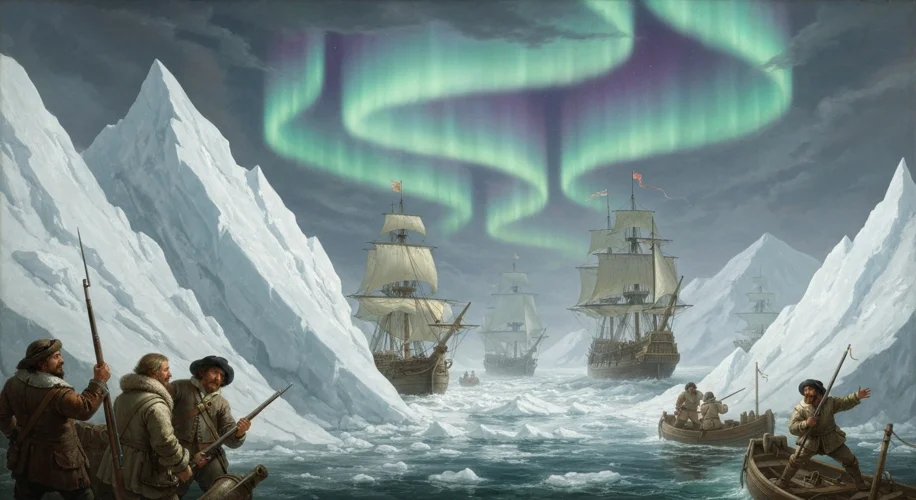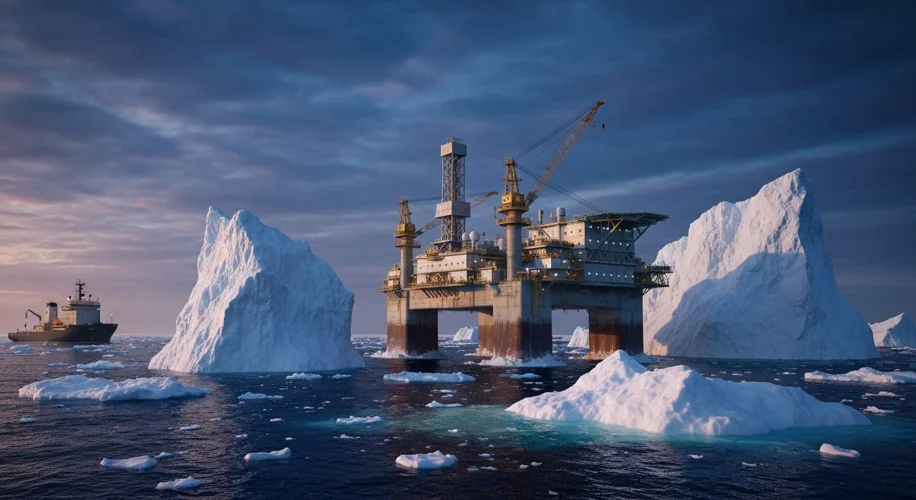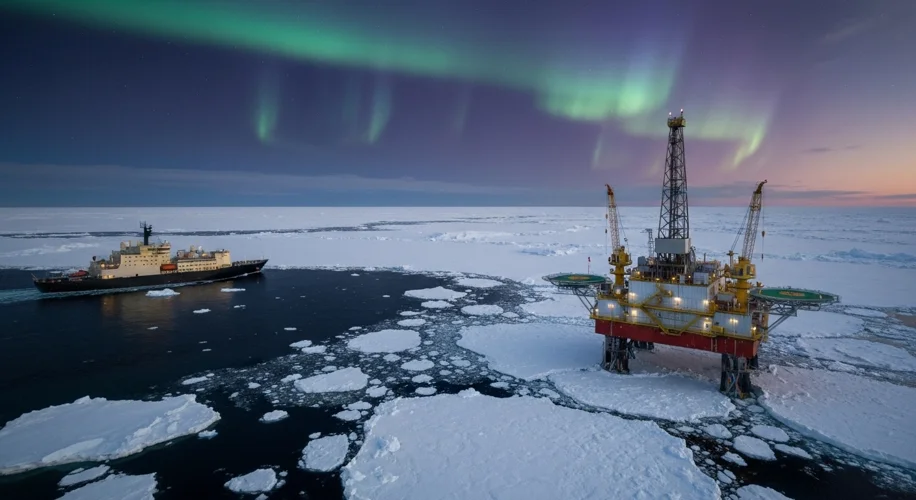The vast, icy expanse of the Arctic, a realm of perpetual twilight and shimmering auroras, has long beckoned humanity with its mysteries and, more recently, its immense potential. For centuries, this frigid frontier was a stage for daring expeditions, driven by the lust for discovery and the elusive Northwest Passage. Today, however, the Arctic is increasingly defined by a new kind of expedition – one focused on the immense natural resources hidden beneath its frozen crust.
The story of the Arctic is not merely one of ice and snow; it is a narrative woven with threads of human ambition, scientific endeavor, geopolitical maneuvering, and a growing awareness of our planet’s delicate balance.
The Age of Discovery: Chasing the Mythical Passage
The earliest European explorations of the Arctic were fueled by a desire to find a shorter maritime route to the riches of Asia. The mythical Northwest Passage, a sea route connecting the Atlantic and Pacific oceans through the Arctic archipelago, was the holy grail. Explorers like John Cabot, Martin Frobisher, and Henry Hudson braved treacherous ice floes, brutal storms, and scurvy-ridden crews in the 16th and 17th centuries. Their journeys were fraught with peril, pushing the limits of human endurance and shipbuilding. Many were lost to the unforgiving environment, their ships crushed by ice or their crews succumbing to the elements. Yet, these expeditions, though failing to find a consistent passage, mapped vast coastlines and laid the groundwork for future claims.

The Whalers and Sealers: Exploiting the Arctic’s Bounty
As exploration continued, the economic lure of the Arctic became undeniable. Whalers and sealers, driven by the demand for oil, blubber, and furs, followed in the wake of the explorers. From the 18th century onwards, vast fleets ventured into Arctic waters, targeting the rich marine life. The success of these ventures was often brutal, leading to the near-extinction of many whale species and the decimation of seal populations. This period, while economically significant for some nations, marked the beginning of large-scale resource exploitation in the region, often with little regard for the environment or the indigenous peoples who called the Arctic home.
The Scientific and Nationalistic Push: Claiming the Pole
The late 19th and early 20th centuries saw a surge in both scientific curiosity and nationalistic fervor. The race to reach the North and South Poles became a prominent, albeit often exaggerated, objective. Figures like Robert Peary, Frederick Cook, and Roald Amundsen became household names, their expeditions capturing the public imagination. While the primary goal was often symbolic – planting a flag at the Pole – these journeys also yielded invaluable scientific data about climate, geography, and the unique ecosystems of the polar regions. Concurrently, nations began to formalize their claims over Arctic territories, based on the principle of ‘uti possidetis’ – effectively claiming land that had been discovered and occupied.
The Dawn of Resource Development: Oil, Gas, and the Geopolitical Chessboard
While ice and distance had long protected the Arctic’s hidden wealth, the latter half of the 20th century and the beginning of the 21st have witnessed a dramatic shift. The discovery of vast reserves of oil and natural gas beneath the Arctic seabed, coupled with the alarming rate of ice melt due to climate change, has brought the region into sharp focus. Suddenly, the Northwest Passage, once a dream for explorers, is becoming a viable shipping route, and previously inaccessible areas are opening up for resource extraction.
This has ignited a complex geopolitical chess game. The Arctic nations – Canada, Denmark (via Greenland), Finland, Iceland, Norway, Russia, Sweden, and the United States – all have significant territorial claims and economic interests. Russia, with the longest Arctic coastline, has been particularly assertive, investing heavily in icebreaker fleets and military infrastructure to assert its dominance and secure its vast energy reserves. Canada and the US are also bolstering their presence, while Norway and Denmark are exploring their continental shelf potential.

The political considerations are immense. The United Nations Convention on the Law of the Sea (UNCLOS) provides a framework for determining continental shelf rights, but disputes over overlapping claims are inevitable. The potential for conflict, while not immediate, is a growing concern. International bodies like the Arctic Council strive to promote cooperation and sustainable development, but national interests often take precedence.
Environmental Concerns: The Fragile Balance Under Threat
However, this surge in resource development comes with profound environmental risks. The Arctic ecosystem is incredibly fragile. An oil spill in these icy waters would be catastrophic, with cleanup efforts proving immensely difficult, if not impossible, due to the extreme cold and ice cover. The increased shipping traffic through newly opened routes also poses a threat, with potential for accidents, pollution, and disruption to marine life.
The indigenous communities, who have lived in the Arctic for millennia, are also on the front lines of these changes. Their traditional ways of life, dependent on hunting and fishing, are increasingly threatened by climate change and industrial development. Their voices, though often marginalized, are crucial in the ongoing debate about the Arctic’s future.
Looking Ahead: A Future of Cooperation or Conflict?
The Arctic stands at a crossroads. It is a region of immense strategic and economic importance, holding a significant portion of the world’s undiscovered oil and gas. The scientific community warns of irreversible environmental damage if development proceeds unchecked. The indigenous populations call for respect for their rights and their lands.
The history of Arctic exploration is a testament to human resilience and ambition. As we stand on the precipice of a new era of Arctic development, the lessons of the past – the pursuit of discovery, the consequences of exploitation, and the importance of international cooperation – must guide our path forward. The frozen frontier, once a symbol of the unknown, now represents a critical test for humanity’s ability to balance progress with preservation, and ambition with responsibility. The decisions made today will determine the fate of this unique and vital part of our planet for generations to come.

